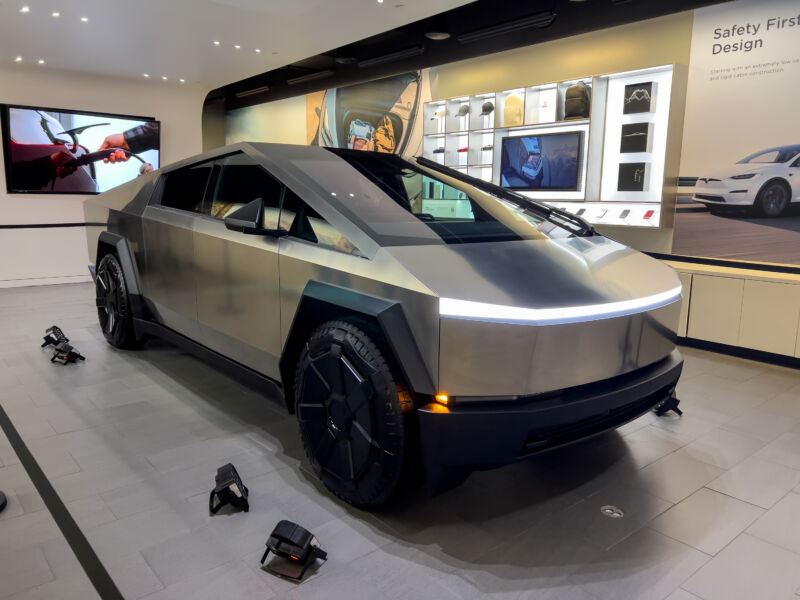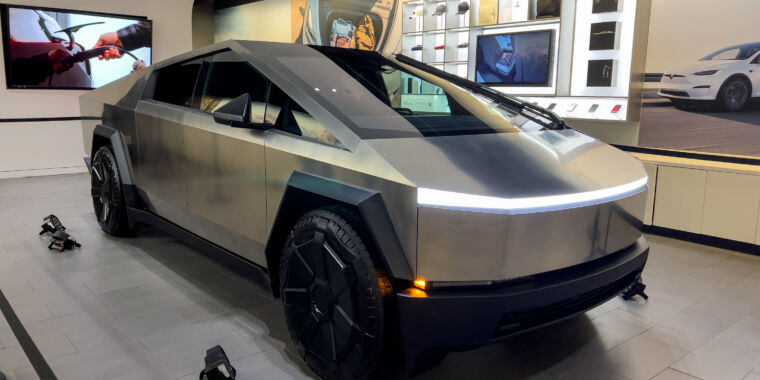
Jonathan Gitlin
When Tesla CEO Elon Musk first unveiled the Cybertruck in 2019, the angular pickup was pitched right at the heart of the highly competitive truck market. With a promised starting price of $39,900, the single-motor version ever so slightly undercut the cheapest version of Ford’s electric F-150 Lightning. Tesla increased the entry-level price by more than $20,000 by the time the Cybertruck was actually getting close to production, with promises of deliveries in 2025. But now, all mention of the cheaper rear-wheel drive Cybertruck is gone from Tesla’s ordering page.
Although pickup trucks have dominated new vehicle sales in the US for decades, their buyers are not exactly clamoring to swap their V8s or diesels for a slab of batteries and some electric motors. Ford has been finding that out the hard way—a constant string of price changes have helped keep demand depressed enough that the Blue Oval is shifting its entire electric vehicle strategy as a result.
And the F-150 Lightning has the advantage of looking just like all the other F-150s that roll off the production line. Not so the Cybertruck, a vehicle that manages to look even less elegant when you see one in the wild rather than on a screen.
As is typical with new Tesla models, the stainless steel pickup’s gestation was anything but easy. Last October Musk told fans “we dug our own grave with the Cybertruck,” having previously berated his workforce about quality control, insisting “sub 10 micron accuracy.”
Things appeared to get worse as customer deliveries began. A problem with the Cybertruck’s pedal led to crashes and a stop to new deliveries, and there had been four official recalls by late June.
Still outselling the competition
And yet, the Tesla has been outselling the Ford despite the cheapest Cybertruck costing a minimum of $99,900, with Lightnings available on dealer lots with price tags that are $20,000-$30,000 less.
A better cross-shop might well be the GMC Hummer EV. Like the Cybertruck, the Hummer is so heavy it counts as a class 3 truck here in the US, a fact that precludes international sales in most markets, which require special licenses to operate heavier vehicles. Both also effectively have six-figure starting prices now, once you take into account delivery charges. So far, the Tesla is winning this sales battle, too, with nearly three times as many being sold in Q2.
That makes it the best-selling vehicle costing more than $100,000, according to industry analysts Cox Automotive, telling Automotive News that “sustained high volume at that price point will be a challenge.”

